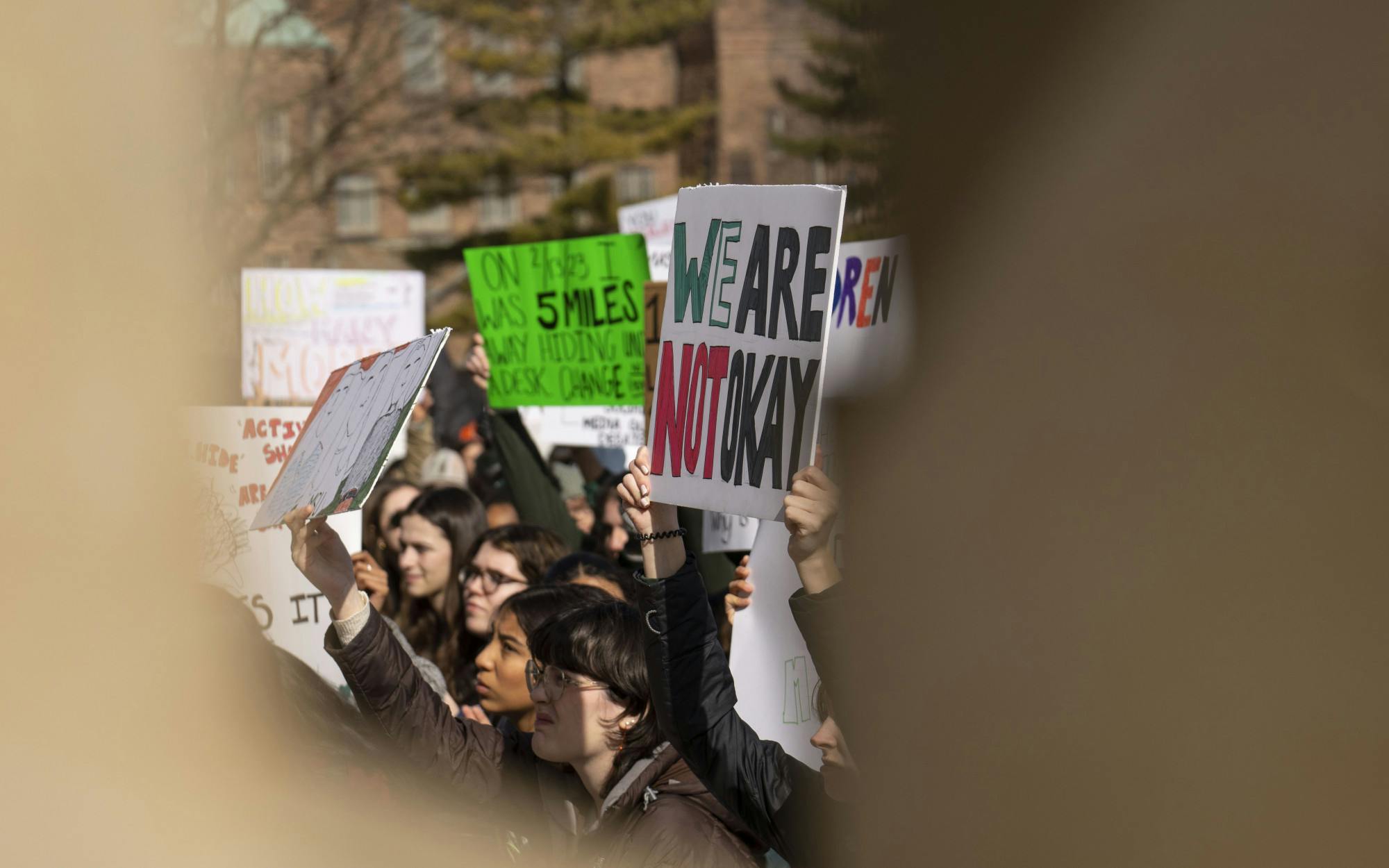Just 37 days.
That’s how many days it had been since the Michigan State University mass shooting when students, faculty and staff received an MSU alert that said “Person Seen with a Weapon” in the subject line.
It was happening again. Rooms fell silent, doors slammed shut, blinds were drawn. As students pulled out their phones to get more information, it’s revealed that the person was seen with a knife.
Don’t get us wrong, a knife is a dangerous weapon. But following a shooting that killed three students, injured five more and left thousands traumatized, seeing the word “weapon” immediately brings the image of a gun.
The MSU community relies on the MSU Alert system to inform Spartans of danger on and around campus. We look to those alerts for timely, informative and full updates.
We should not have to guess whether our alerts are giving us accurate, quick information.
We know that the first call informing police of the person with the weapon came in at 12:27 p.m. The first alert reached student and faculties’ emails 30 minutes later — at 12:57 p.m.
Thirty minutes.
The second alert came at roughly 1:18 p.m., and the third at approximately 1:27 p.m. When did the first alert hit Michigan State University Police and Public Safety Twitter? At 1:16 p.m. — 49 minutes after the report came in.
What’s the purpose of an alert system if students have to get information from other places, which can be full of misinformation? Why would we feel safe?
This sounds like a tune we’ve heard before: On Feb. 13, the very first MSU alert that informed students of a danger on our campus went out after the shooter had already terrorized students and left the scene.
Ingham County 911 received the first call of shots fired at Berkey Hall at 8:18 p.m. that night. The shooter left the second shooting location, the MSU Union, at 8:26 p.m. The first MSU alert went to students at 8:30 p.m. Some of us on staff didn’t receive the alert until 9 p.m.
The shooter was able to enter and exit two buildings in less than 10 minutes. All students spent at least 12 precious minutes unaware of the danger on our campus.
More students could have died due to late messages and the minutes they spent unaware.
MSU Police previously told Bridge Michigan that its initial alert on Feb. 13 was late because all officers “heroically went toward the threat,” leaving “no one at headquarters capable of logging into a computer system required to send an emergency alert to students.” An off-duty officer had to log onto the system from home to send the message, a MSU DPPS spokesperson told Bridge.
Police then backtracked this statement and offered a new explanation: a front-desk employee at police headquarters, who usually doesn’t issue emergency alerts, felt the need to confirm it with a supervisor, which may have delayed the alert.
Regardless of the explanation and what the truth is, it should be someone’s explicit job to monitor the alert system. Instead, MSU Police waited until tragedy struck to fine tune this process.
Unprecedented situations bring mistakes and awareness to issues that need solving. We can’t continue to operate on an alert system that fails to keep students safe. We must be proactive and it must start today.
Students are already living in fear. We can’t live in ignorance too.
The MSU alert system has to be precise in its language. Many faculty and students don’t know the difference between “shelter-in-place” and “secure-in-place” — as proven through reporting by The State News. We can’t waste precious time trying to figure it out.
And the MSU and East Lansing Police departments must be transparent with their information, so we can help keep our community safe.
The March 22 email reads, “monitor local media for more information.” The responsibility of providing further and accurate information is put on us — we are the local media.
We call police spokespeople at five minute intervals, each time listening as the call is sent to voicemail. We eagerly try to obtain this “more information” that the email speaks of. We want to ask for more clarifying information about the person, a more specific location of where they were seen and instruction on what MSU students should do. But we can’t.
We can’t make information appear. We wait for confirmation, we seek out details, we strive to be accurate and informative. But we know just as much as everybody else does, which helps no one.
We want to trust MSU DPPS and the East Lansing Police Department to protect its community. We want to feel safe again on our campus.
But a lack of timely information just creates panic, uncertainty and stress within a community that has already endured a tragic semester of loss.
MSU, you can’t give students their sense of security back. But you can help us help keep our community safe.
The State News Editorial Board is made up of Editor-in-Chief SaMya Overall, Managing Editor Drew Goretzka, Campus Editor Morgan Womack, City Editor Dan Netter, Culture Editor Miranda Dunlap, Sports Editor Jenna Malinowski, Copy Chief Claire Grant, Visual Director Chloe Trofatter, Multimedia Editor Audrey Richardson, Social Media Manager Lauren Snyder, Staff Rep. Dina Kaur and Diversity Rep. Jada Vasser.



